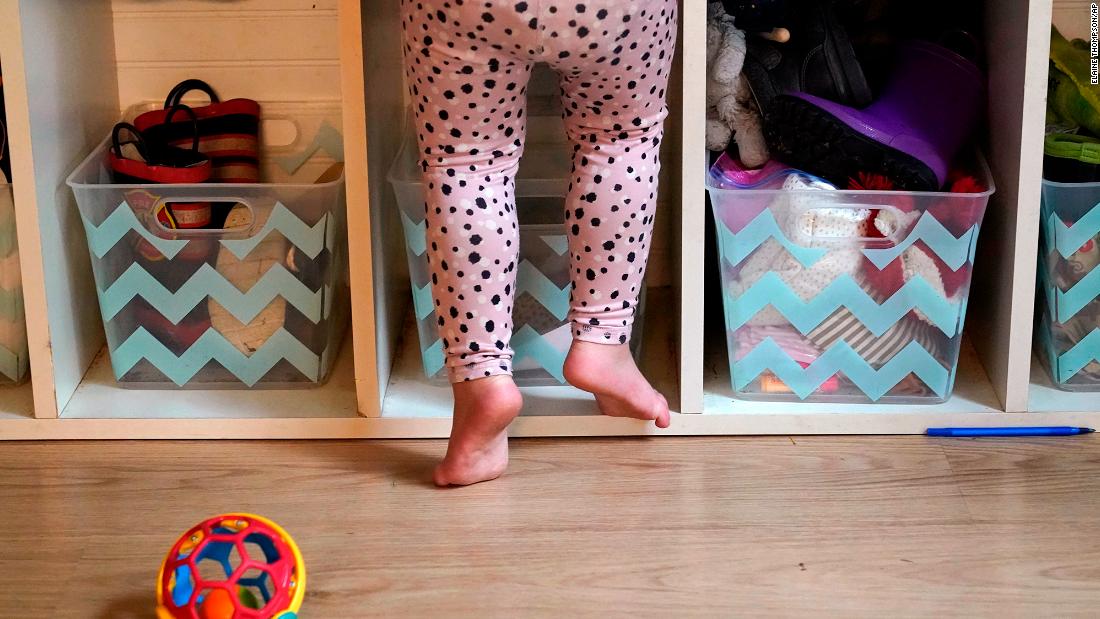
And now it is beginning to backslide.
The body of workers discounts — coupled with ongoing demanding situations of low pay and spotty advantages for staff — have economists and coverage mavens sounding the alarm: If this business falters additional, it will spell bother for all the hard work marketplace as operating oldsters scramble to search out deal with their children.
“Now that we are seeing a lower [in employment], that are meant to be being worried for lots of people who’re depending on those products and services,” mentioned Caitlin McLean, director of multi-state and global techniques on the College of California Berkeley’s Middle for the Find out about of Kid Care Employment.
“That is completely a contributor to the broader employee scarcity that we are seeing,” she added.
The kid care business was once “slightly getting through ahead of the pandemic,” she mentioned. “And now it is in reality at a verge of collapse.”
Kid care staff in brief provide
The placement has best been exacerbated through the pandemic.
“It is a tricky process in the most efficient of instances,” Sarah Area, a Wells Fargo senior economist mentioned, including that “right here we’re in a deadly disease.”
Higher well being dangers, ever-changing laws and inflationary pressures have heightened considerations for kid care suppliers.
“It is indubitably other now than it was once two, 3 years in the past, from a supplier’s standpoint,” mentioned Lisa Keller, who runs a home-based kid care middle in Horace, North Dakota. “You’ve your difficult and demanding days, however now you pay attention a child cough [and you wonder if] this child has a chilly, and it is no giant deal, or we might be shutting down for 20 days.”
“We are just about two years in, and I believe the longer this is going on, and also you shouldn’t have that choice [to return to work], it turns into greater than only a brief go out or a brief smash from the hard work drive,” she mentioned.
Elevating employee wages items a Catch-22
Some of the largest demanding situations that existed for Keller ahead of the pandemic stays true these days: It is arduous to search out assist when wanted.
“You place it in the market, ‘In search of part-time assist,’ and as a rule no one can even reply,” she mentioned. “I have no idea if it has to do with [Covid] publicity or with pay. I am not even certain what the most important drawback is with it.”
On reasonable, kid care staff in america are paid $13.51 according to hour, in keeping with the EPI research. That is just about part of what the typical US employee makes, at $27.31 an hour.
This steadily signifies that kid care staff can not come up with the money for to give a boost to themselves or their households, leading to upper charges of process turnover, reduced high quality of care, and a better chance for cities and towns to turn into kid care deserts, the EPI discovered.
Higher pay would give a boost to staff’ monetary safety, building up worker retention, and, in the long run, result in a more potent economic system, in keeping with the research. The EPI suggests a minimal hourly salary between $21.11 and $25.95 an hour.
Alternatively, elevating wages creates a possible Catch-22: It might push kid care prices upper, and the ones bills are already one of the most greatest for households in america.
“I do know numerous folks suppose daycare is costly, and it’s for fogeys, [but] then we are additionally no longer creating a ton of cash,” mentioned Keller. “So that you can rent someone, it’s a must to have extra children, so you’ll pay them, and it will get difficult that approach — ensuring you’ll in finding the youngsters so you’ll come up with the money for the assist, however wanting the assist as a result of you’ll have best such a lot of children. It is a balancing act.”
The answer, mentioned Elise Gould, a senior economist with the EPI and one of the most authors of the November 2021 research, is extra executive involvement. This might come with common pre-Ok, monetary give a boost to for suppliers in addition to subsidies to households, “with provisions that ensure upper wages and higher operating prerequisites for the employees,” Gould mentioned.
“That might occur on the federal stage, however there is no explanation why state and localities can not soak up the ones efforts,” she added.
In its Construct Again Higher plan, the Biden management has proposed expanding kid care investment — particularly thru subsidies to verify low- and middle-income households do not pay greater than 7% in their revenue on kid care and thru common preschool. Alternatively, the ones efforts are a long way from sure, with Construct Again Higher striking within the stability.
Some state governments are getting cutting edge. In North Dakota, the state’s Division of Human Services and products’ Early Adolescence Services and products Department used federal pandemic reduction investment and issued $50 million in emergency running grants in 2020 for kid care suppliers. Remaining 12 months, it promised just about $30 million to assist kid care suppliers with operational bills all over the pandemic and a length of top inflation.
This 12 months, the state plans to release a brand new kid care occupation pathway program to give a boost to facets like coaching, certification, recruitment and retention. That is along with ongoing efforts akin to offering startup grants for kid care companies and providing kid care help for process searching oldsters.
“I believe [support for child care] is super-critical,” mentioned Kay Larson, director of the Early Adolescence Services and products Department. “It is tough when operating oldsters shouldn’t have some position that they consider for his or her kids to have a high quality early early life enjoy and makes them productive individuals of the body of workers.”
